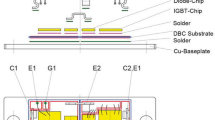Abstract
In this paper, we propose an AI (Artificial Intelligence) solution for solder ball HIP (Head-In-Pillow) defect inspection. The HIP defect will affect the conductivity of the solder balls leading to intermittent failures. Due to the variable location and shape of the HIP defect, traditional machine vision algorithms cannot solve the problem completely. In recent years, Convolutional Neural Network (CNN) has an outstanding performance in image recognition and classification, but it is easy to cause overfitting problems due to insufficient data. Therefore, we combine CNN and the machine learning algorithm Support Vector Machine (SVM) to design our inspection process. Referring to the advantages of several state-of-the-art models, we propose our 3D CNN model and adopt focal loss as well as triplet loss to solve the data imbalance problem caused by rare defective data. Our inspection method has the best performance and fast testing speed compared with several classic CNN models and the deep learning inspection software SuaKIT.















Similar content being viewed by others
References
Wikipedia, Inspection in manufacturing. https://en.wikipedia.org/wiki/Inspection_in_manufacturing, (2019).
Encyclopedia, BGA Definition from PC Magazine Encyclopedia, https://www.pcmag.com/encyclopedia/term/38577/bga, 2019.
D. Xie, et al. Head in Pillow (HIP) and yield study on SIP and PoP assembly. In: Proceedings of IEEE Electronic Components and Technology Conference, San Diego, California, pp. 752–758, (2009).
Gondrom, S., et al.: X-Ray computed laminography: an approach of computed tomography for applications with limited access. Nucl. Eng. Des. 190(1–2), 141–147 (1999)
Agilent Technologies, Chemical analysis, life sciences, and diagnostics-agilent, https://www.agilent.com, 2019.
A. Castellanos, et al. Head in pillow X-ray inspection at flextronics, https://smtnet.com/library/files/upload/head-in-pillow-inspection-flextronics.pdf, 2019.
Test Research Inc., Test Research Inc., https://www.tri.com.tw/en/index.html, (2019).
Cortes, C., Vapnik, V.: Support-vector networks. Mach. Learn. 20(3), 273–297 (1995)
Deng, L., Yu, D.: Deep learning: methods and applications. Found. Trends® Signal Process. 7(3–4), 197–387 (2014)
Wikipedia, Convolutional neural network. https://en.wikipedia.org/wiki/Convolutional_neural_network, (2019).
LeCun, Y., et al.: Gradient-based learning applied to document recognition. Proc. IEEE 86(11), 2278–2324 (1998)
K. Simonyan and A. Zisserman, Very deep convolutional networks for large-scale image recognition. arXiv preprint ,arXiv:1409.1556, 2014.
C. Szegedy, et al. Going deeper with convolutions. In: Proceedings of IEEE Conference on Computer Vision and Pattern Recognition, Boston, MA, pp. 1–9, (2015).
C. Szegedy, et al. Rethinking the inception architecture for computer vision. In: Proceedings of IEEE Conference on Computer Vision and Pattern Recognition, Las Vegas, NV, pp. 2818–2826, (2016).
K. He, et al. Deep Residual Learning for Image Recognition. In: Proceedings of IEEE Conference on Computer Vision and Pattern Recognition, Las Vegas, NV, pp. 770–778, (2016).
G. Huang, et al. Densely connected convolutional networks. In: Proceedings of IEEE Conference on Computer Vision and Pattern Recognition, Honolulu, Hawaii, pp. 4700–4708, (2017).
T. C. Tsan, et al. Solder ball 3D reconstruction with X-ray images using filtered back projection. In: TENCON 2018–2018 IEEE Region 10 Conference. IEEE, (2018).
Otsu, N.: A threshold selection method from gray-level histograms. IEEE Trans. Syst. Man Cybern. 9(1), 62–66 (1979)
Samet, H., Tamminen, M.: Efficient component labeling of images of arbitrary dimension represented by linear bintrees. IEEE Trans. Pattern Anal. Mach. Intell. 10(4), 579–586 (1988)
T. Y. Lin, et al. “Focal loss for dense object detection. In: Proceedings of IEEE International Conference on Computer Vision. Venice, Italy, pp. 2980–2988, (2017).
B. Raj, A Simple Guide to the Versions of the Inception Network. https://towardsdatascience.com/a-simple-guide-to-the-versions-of-the-inception-network-7fc52b863202, 2018.
F. Schroff, D. Kalenichenko, and J. Philbin, FaceNet: A unified embedding for face recognition and clustering. In: Proceedings of IEEE Conference on Computer Vision and Pattern Recognition, Boston, MA, pp. 815–823, (2015).
Fawcett, T.: An introduction to ROC analysis. Pattern Recogn. Lett. 27(8), 861–874 (2006)
Acknowledgements
This research was supported by the Ministry of Science and Technology of Taiwan, R.O.C., under Grants MOST 109-2221-E-002-158-MY2 and MOST 108-2221-E-002-140, and by Test Research, Jorgin Technologies, III, Chernger, ARCS Precision Technology, D8AI, PSL, and LVI.
Author information
Authors and Affiliations
Corresponding author
Additional information
Publisher's Note
Springer Nature remains neutral with regard to jurisdictional claims in published maps and institutional affiliations.
Rights and permissions
About this article
Cite this article
Tsan, TC., Shih, TF. & Fuh, CS. TsanKit: artificial intelligence for solder ball head-in-pillow defect inspection. Machine Vision and Applications 32, 66 (2021). https://doi.org/10.1007/s00138-021-01192-8
Received:
Revised:
Accepted:
Published:
DOI: https://doi.org/10.1007/s00138-021-01192-8




